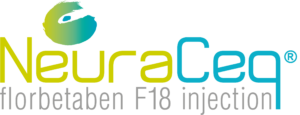PRESS RELEASE
Life Molecular Imaging announces an ongoing collaboration with UCB for PI-2620, a novel tau imaging agent, for improved diagnosis of Progressive Supranuclear Palsy
BERLIN, Germany, March 3, 2021 – Life Molecular Imaging today announces an ongoing collaboration with UCB Biopharma to investigate the utility of the tau-positron emission tomography (PET) tracer PI-2620 in patients with progressive supranuclear palsy (PSP). This collaboration has been in place for the past few years.
PI-2620 is shown to be a promising biomarker for the improved detection and characterization of this currently untreatable, fatal disease. Recently published clinical data1 indicate that PI-2620 could facilitate an earlier and more reliable diagnosis of PSP, where previous tau tracers and other biomarkers failed.
PSP is a rare disease that affects approximately 6 out of every 100,000 individuals worldwide. Patients can be challenging to diagnose especially at early disease stages because they show symptoms, such as movement difficulties, stiffness, clumsiness, cognitive impairment, and frequent falls that are also present in other neurodegenerative diseases, like Parkinson’s disease. Misdiagnosis of PSP hampers drug development due to heterogeneous study populations, mixing patients with tau-related pathologies and patients suffering from other proteinopathies.
PI-2620 was discovered and developed in a research collaboration between Life Molecular Imaging and AC Immune, a Swiss-based clinical stage biopharmaceutical company2. Life Molecular Imaging has the exclusive, worldwide license for research, clinical development and commercialization of tau PET tracers generated within the discovery program. PI-2620 is currently under investigation as a targeted radiopharmaceutical for the detection of tau depositions in Alzheimer’s disease and other primary tauopathies such as PSP.
Describing the partnership, Mark Hope, SVP and Head of the Neurodegeneration Mission, UCB, explained: “There is a need to confirm pathophysiology in PSP patients and to be able to offer the potential to participate in future clinical trials of treatments targeting tau protein as early as possible. The data from PI-2620 suggest that it could be an important biomarker of tau pathology in PSP patients. We are excited to be part of this important research.”
Dr. Andrew Stephens, Chief Medical Officer at Life Molecular Imaging, added: “The recent clinical data obtained to date with PI-2620 has substantiated its potential as a biomarker to study 4R tau-related diseases like PSP in addition to its previously demonstrated value as biomarker in Alzheimer’s disease.3-8 The research collaboration with UCB helps us to further validate PI-2620 as a biomarker in PSP to support patient selection and improve monitoring of therapeutic efficacy of novel clinical candidates targeting tau.”
References
- Brendel et al. “Assessment of 18F-PI-2620 as a Biomarker in Progressive Supranuclear Palsy” JAMA Neurology 77(11):1408-1419 https://doi.org/10.1001/jamaneurol.2020.2526
- Kroth et al. “Discovery and Preclinical Characterization of 18F-PI-2620, a Next-Generation Tau PET Tracer for the Assessment of Tau Pathology in Alzheimer’s Disease and Other Tauopathies“ Eur J Nucl Med Mol Imaging. 2019 Sep;46(10):2178-2189.
https://doi.org/10.1007/s00259-019-04397-2 - Mueller et al., “Tau PET imaging with 18F-PI-2620 in Patients with Alzheimer Disease and Healthy Controls: A First-in-Humans Study” J Nucl Med. 2020 Jun;61(6):911-919
https://doi.org/10.2967/jnumed.119.236224 - Bullich et al., “Evaluation of Dosimetry, Quantitative Methods, and Test-Retest Variability of 18F-PI-2620 PET for the Assessment of Tau Deposits in the Human Brain” J Nucl Med. 2020 Jun;61(6):920-927 https://doi.org/10.2967/jnumed.119.236240
- Beyer et al., “Early-phase 18F-PI-2620 tau-PET imaging as a surrogate marker of neuronal injury” Eur J Nucl Med Mol Imaging. 2020. 47, 2911-2922. https://doi.org/10.1007/s00259-020-04788-w
- Mormino et al., “Tau PET imaging with 18F-PI-2620 in aging and neurodegenerative diseases”. Eur J Nucl Med Mol Imaging. 2020 Jun 23. https://doi.org/10.1007/s00259-020-04923-7 Online ahead of print.
- Oh et al., Clinical Evaluation of 18F-PI-2620 as a Potent PET Radiotracer Imaging Tau Protein in Alzheimer Disease and Other Neurodegenerative Diseases Compared With 18F-THK-5351”, Clin Nucl Med. 2020, 45, 841-847. https://doi.org/10.1097/RLU.0000000000003261
- Chotipanich et al., “Evaluation of Imaging Windows for Tau PET Imaging Using 18F-PI-2620 in Cognitively Normal Individuals, Mild Cognitive Impairment, and Alzheimer’s Disease Patients” Molecular Imaging. 2020. https://doi.org/10.1177/1536012120947582
About Life Molecular Imaging (LMI)
LMI (formerly Piramal Imaging) was formed in 2012 with the acquisition of the molecular imaging research and development portfolio of Bayer Pharma AG, and is now part of the Alliance Medical Group, an integrated business including research and development laboratories, a network of cyclotrons, radiopharmacies and imaging facilities. By developing novel PET tracers for molecular imaging, LMI is focusing on a key field of modern medicine. LMI strives to be a leader in the Molecular Imaging field by developing innovative products that improve early detection and characterization of chronic and life-threatening diseases, leading to better therapeutic outcomes and improved quality of life. Please visit: https://life-mi.com.
About UCB
UCB, Brussels, Belgium (www.ucb.com) is a global biopharmaceutical company focused on the discovery and development of innovative medicines and solutions to transform the lives of people living with severe diseases of the immune system or of the central nervous system. With more than 7 600 people in approximately 40 countries, the company generated revenue of € 5.3 billion in 2020. UCB is listed on Euronext Brussels (symbol: UCB). Twitter: @UCB_news
For further information, please contact:
Global Head of Communications
Nicole Fletcher
Life Molecular Imaging
Phone: +1 857-202-1122
Email: n.fletcher@life-mi.com
Scientific Operations
Norman Koglin
Life Molecular Imaging
Phone: +49 30 461 124 606
Email: n.koglin@life-mi.com

